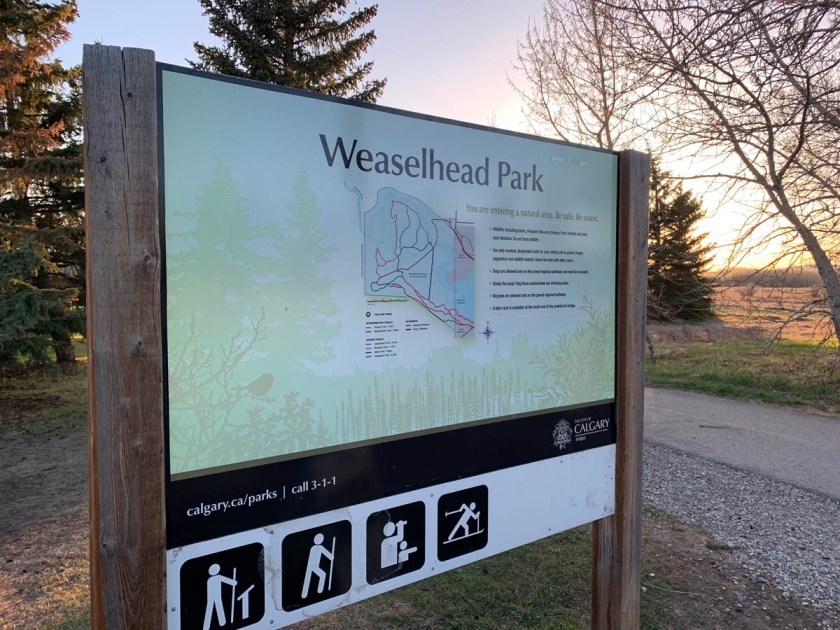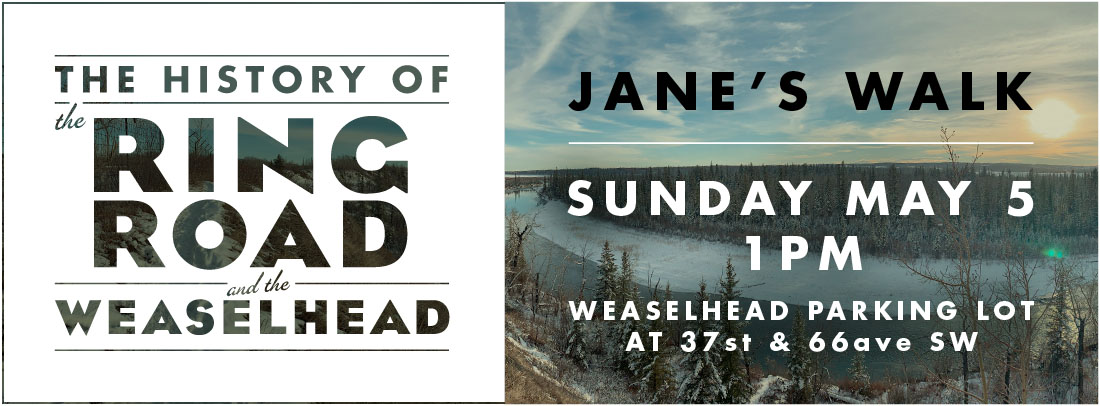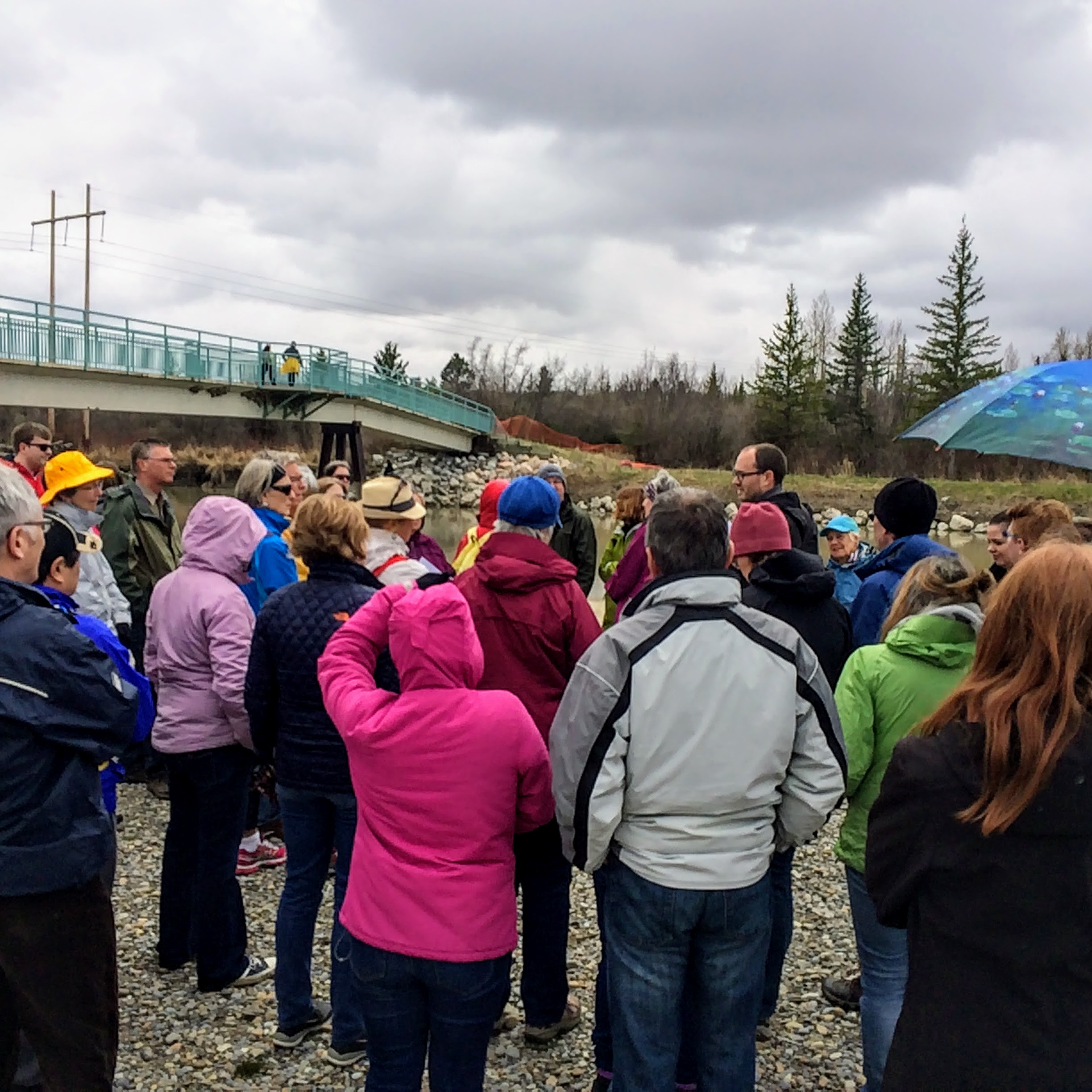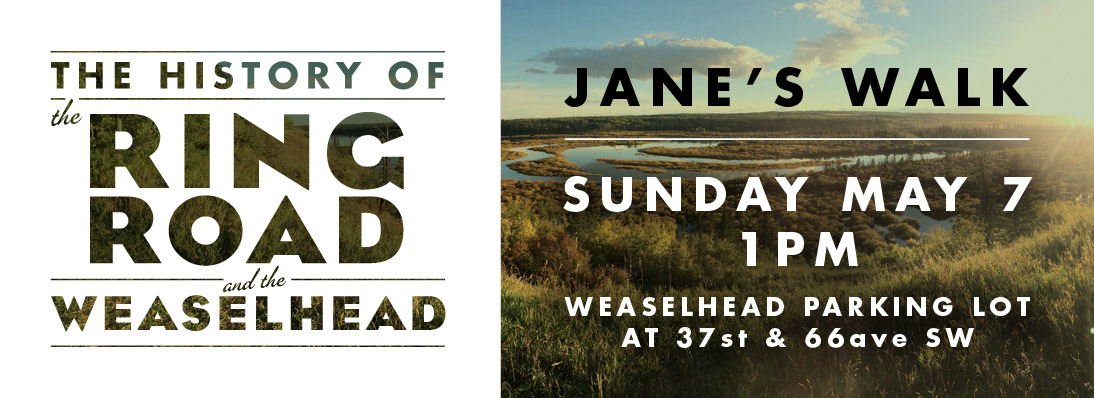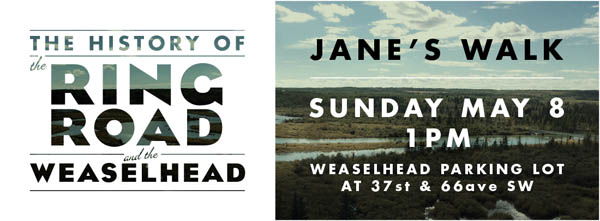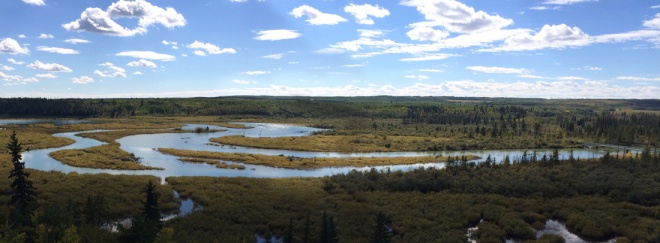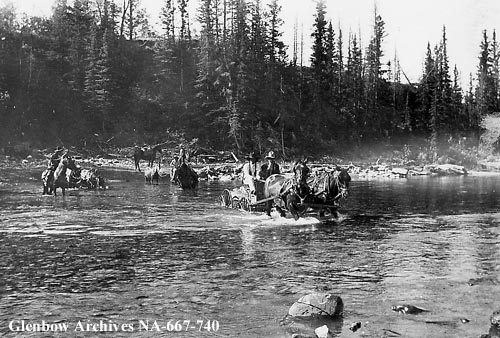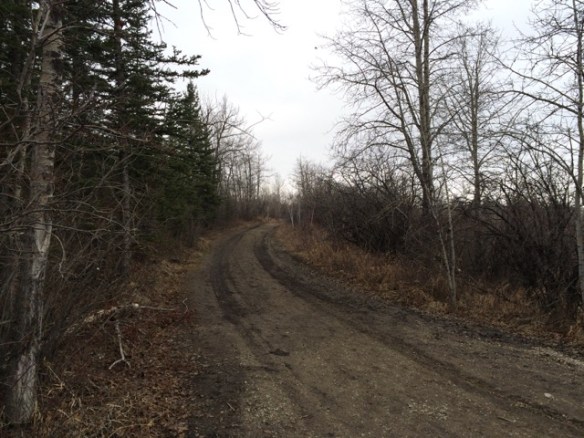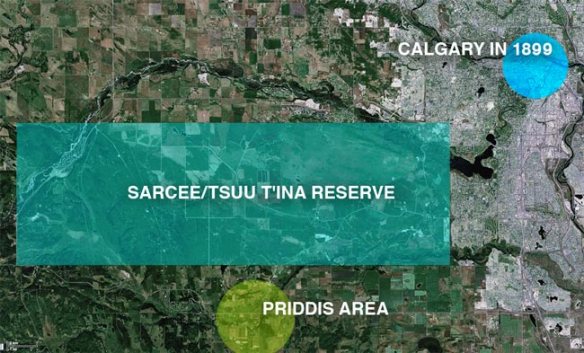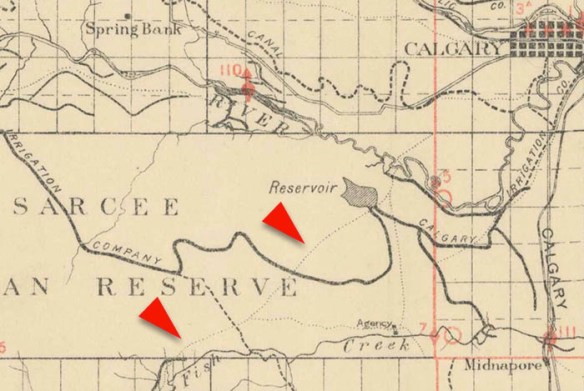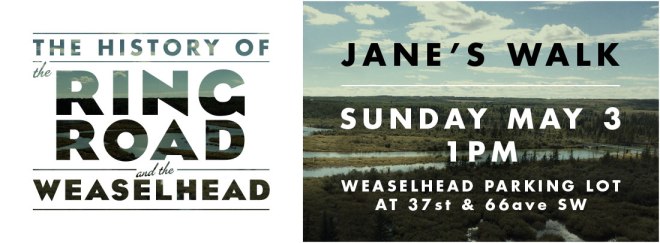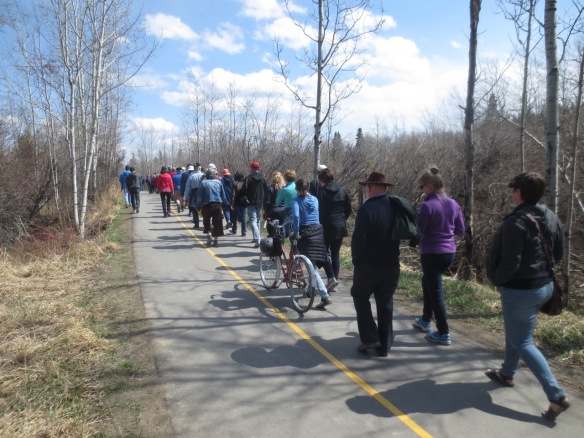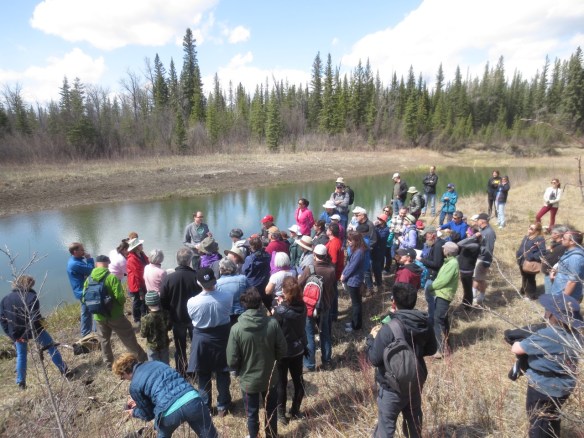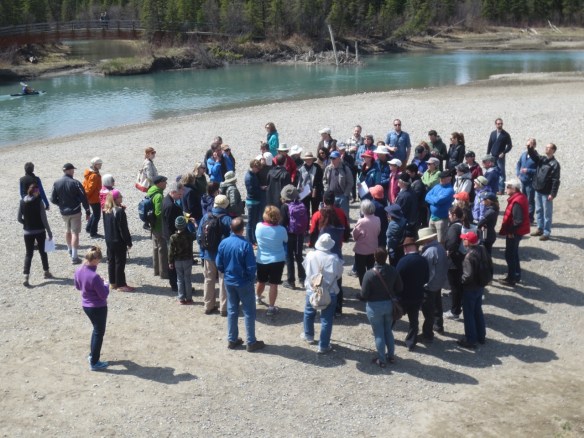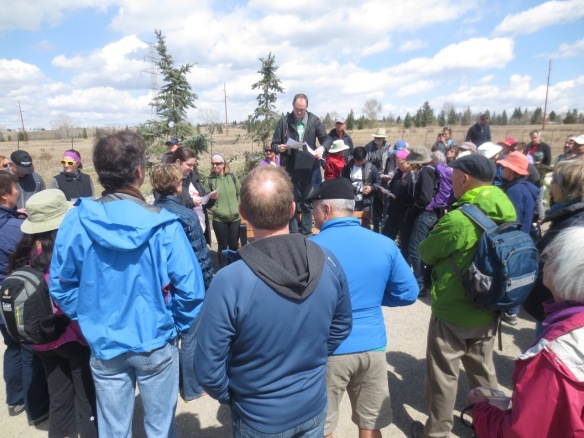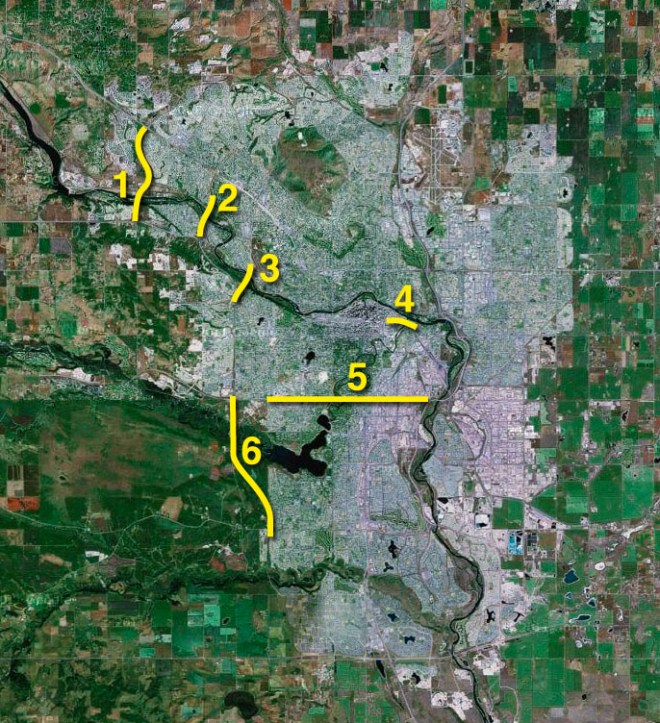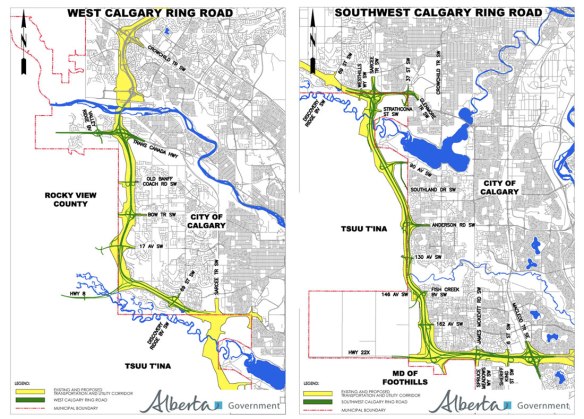This is the second in a five-part series looking at the history of the Priddis Trail. The first part, which examined the establishment of the road can be found here, and part three can be found here. I acknowledge that the resources that inform this work are largely that of non-First Nations sources, and while this is intended to be a factual look at the history of the road, it must be noted that the perspective is largely non-indigenous. I hope that further research and working with Tsuut’ina sources will reveal other equally valid perspectives on this story in the future.
—–
From Governor-Generals, Tsuut’ina Chiefs and Colonels, to Ranchers, Homesteaders and Boy Scouts, the Priddis Trail was important to a great many people for a great number of reasons. The establishment of the Tsuut’ina reserve and an early influx of Homesteaders in the late 1800s, followed not long after by the Military and a growing oil industry, meant that reliable access to a growing district was vital to the region.
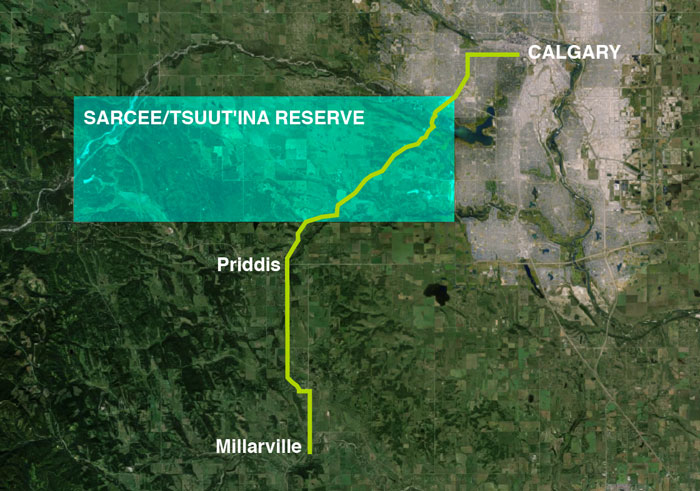 (Map of the route between Calgary and Millarville through the Tsuut’ina Reserve in 1899. Source: ‘Plan Shewing survey of Old Trail and New Road from N.E. Cor. Sarcee Indian Reserve to Millarville P.O.’ A. P. Patrick. 1899. Plan 1119i, Alberta Land Titles, Southern Alberta Land Registration District )
(Map of the route between Calgary and Millarville through the Tsuut’ina Reserve in 1899. Source: ‘Plan Shewing survey of Old Trail and New Road from N.E. Cor. Sarcee Indian Reserve to Millarville P.O.’ A. P. Patrick. 1899. Plan 1119i, Alberta Land Titles, Southern Alberta Land Registration District )
BEFORE THE HIGHWAY, A TRAIL
When first formed, the route that would become the Priddis Trail was a modest dirt track used by members of the Tsuut’ina Nation and by Homesteaders living in the Priddis and Millarville districts of Alberta. Suitable for horse-and-wagon travel, the trail provided a much needed connection between these southern areas and Fort Calgary, including the burgeoning town that had begun to grow around it. In its earliest days, the land that the trail passed through had not yet been designated as the Tsuut’ina reserve1, and when the reserve was established in 1883, the use of the trail continued unabated by Tsuut’ina members and non-Indigenous settlers alike.
 (‘Group of visitors in wagon on the way to Sarcee (Tsuu T’ina) reserve, Alberta.’ Glenbow Archives PA-3516-7. ca. 1899)
(‘Group of visitors in wagon on the way to Sarcee (Tsuu T’ina) reserve, Alberta.’ Glenbow Archives PA-3516-7. ca. 1899)
The earliest record of the Priddis Trail comes not from the path itself, but of the trail’s crossing of the Elbow river, known as the ‘Weasel Head Crossing’. In December of 1890 a newspaper article noted the Weasel Head Crossing as the site of the butchering of stolen cattle,2 making this the first mention, albeit indirectly, of both the trail and of the ‘Weaselhead’ name that this part of the Elbow river valley would later become known by.
By 1894 the first map of the route was made by the Department of the Interior3, and soon the trail was showing up regularly in newspaper accounts and official documents. In response to questions about the trail in 1899, the acting Agent of the Sarcee Agency stated: “(Chief Bull Head) informed me the trail marked in the plan was in use by the Indians before the treaty was made with them.”4, an indication of the long use of this important connection.
 (A map from 1897 [with added highlights] showing the route of the Priddis Trail. Source: “Preliminary map of a portion of the District of Alberta showing Canadian irrigation surveys during 1894″. University of Alberta Libraries, Peel Map 747.)
(A map from 1897 [with added highlights] showing the route of the Priddis Trail. Source: “Preliminary map of a portion of the District of Alberta showing Canadian irrigation surveys during 1894″. University of Alberta Libraries, Peel Map 747.)
For users of the road, whether Nation members or Homesteaders, the trail enabled sustainability and economic activity by providing access to the marketplaces of Calgary. In 1893, for instance, a “comfortable dwelling house, with a good stable and corral” was built at the Weasel Head Crossing so that Tsuut’ina members had a place to stay when harvesting timber destined for sale in the City5. Former Tsuut’ina Nation Chief Sanford Big Plume also noted the use of the old trail in the Nation’s economic and cultural activities: “In the late 1800s… Once a year, Foxtail would cut small evergreens, load them on a wagon led by horses, and drive them down the Priddis Trail to Fort Calgary. There, they were sold as Christmas trees. With the proceeds of those trees, Foxtail would help fund a meal for our people, so we could also celebrate Christmas.”6
In a similar way, Homesteaders relied on the trail to bring produce and stock to market, and to access the services that the City offered.
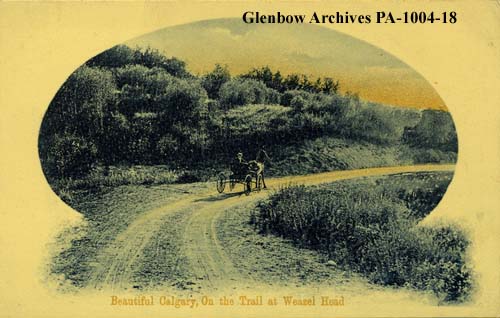 (Postcard showing a wagon on the Priddis Trail. ‘Weaselhead district, Calgary, Alberta.’ Glenbow Archive PA-1004-18. ca. 1908.)
(Postcard showing a wagon on the Priddis Trail. ‘Weaselhead district, Calgary, Alberta.’ Glenbow Archive PA-1004-18. ca. 1908.)
Besides being functional, the trail was also noted to offer access to some of the more beautiful country in the area, and the use of the trail for pleasure would increase in popularity over the years. In the summer of 1895 the Governor-General of Canada Lord Aberdeen was touring the country, and by the summer of that year he had arrived in Calgary. On a morning in August, Lord and Lady Aberdeen were driven in the vice-regal carriage to a meeting with members of the Tsuut’ina Nation via the trail; the journey having been noted in the Calgary Daily Herald as “one of the prettiest drives in the N.W.T.”7. Forty years later, noted homesteader A.M. Stewart mirrored that sentiment in stating “…this road constitutes about the prettiest drive out of Calgary.”8 and the route was included in maps of automobile pleasure tours for the Calgary region.9
The still-nameless trail was increasingly well-used, and this usage would soon outstrip the ability of the trail to comfortably accommodate the traffic. By the end of the 1890s, muddy conditions on the primitive trail, ruts caused by wagon wheels and a lack of a bridge over the Elbow river would cause problems for travelers looking for unimpeded access. The un-maintained dirt track was proving to no longer be suitable for the use it was expected to accommodate, and Homesteaders living in the area soon lobbied to correct the situation. Continue reading “The Rise and Fall of the Priddis Trail – Part 2: A Road In Use”
